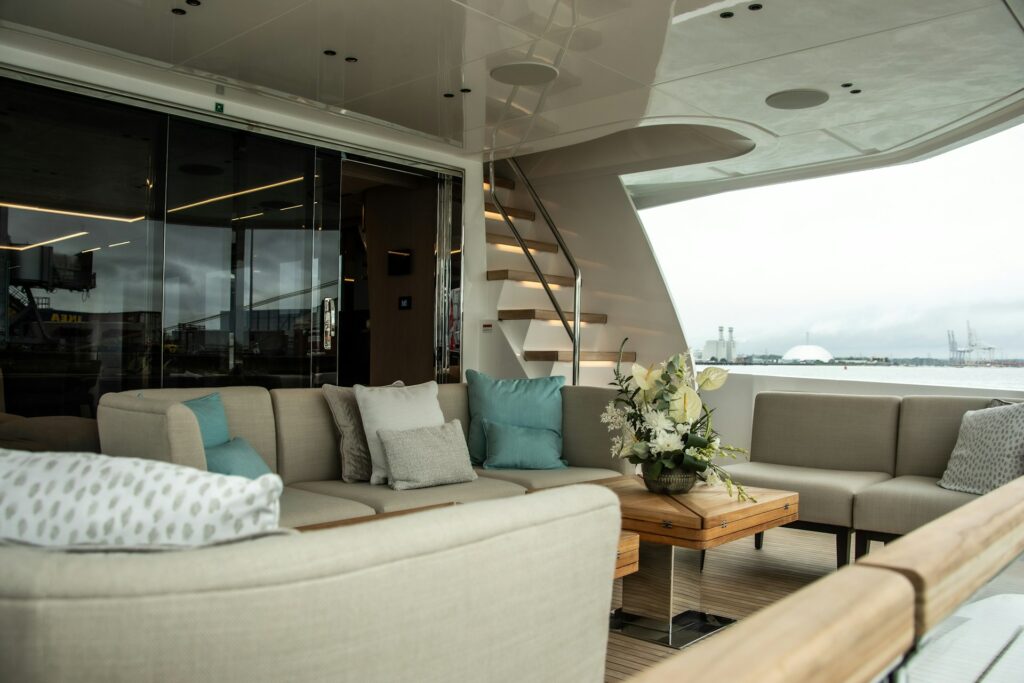There’s a minute before dawn when the bay is graphite and the boat is only breath and outline. You cross the saloon barefoot; the floor answers with a quiet thud—good timber, not a drum. A bronze pull still holds last night’s warmth. Nothing tries to impress you. It just works. Coffee sloshes, not spills. You can cross the room by memory.
That’s the measure of a luxury yacht interior: a few decisions made once and respected everywhere on board, so the boat reads as one language from saloon to stateroom. This guide isn’t a shopping list. It’s ten investment-grade pieces you’ll still love after 1,000 sea miles—materials that feel better with use, lighting that flatters every hour, finishes that survive salt and sun.
For each, you’ll get what to choose, why it matters at sea, and maker-level specs you can hand straight to the yard. Ready?
1) Bronze where your hand lands
Door pulls, locker buttons, latches, switch plates—the parts you grab without thinking should be bronze. Not hotel chrome. Bronze warms in the hand, damps rattle, throws a soft highlight, and looks better after a season. In a luxury yacht interior, a latch should land with weight, not noise.
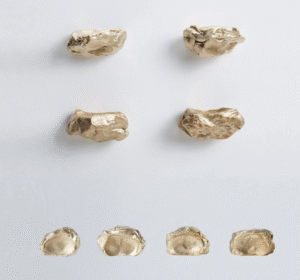
Shop notes
-
Silicon bronze (C655) or naval brass; lost-wax castings, hand-rubbed patina.
-
Seal with beeswax or a whisper of marine lacquer in wet zones.
-
Countersunk M4/M5 fasteners with nylon washers where metal meets lacquer.
-
Choose one tone per deck and hold it.
Where to source
Bespoke cast hardware from ateliers via Artemest; rare and studio pulls on 1stDibs.
2) Lighting for a Luxury Yacht Interior: Alabaster & Cast Glass
After dark you want glow, not glare. Alabaster plates and cast-glass shades dim cleanly and keep skin and timber warm. Run a quiet ceiling plate in the saloon, sconces down the passage, and a small pendant over a console—direction without hotspots.
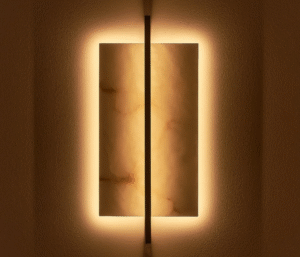
Shop notes
-
24-V drivers; PWM ~1–2 kHz for smooth lows and camera-safe scenes.
-
Keep the family at 2700 K, CRI 95+.
-
Anti-corrosion fixings; g-force mounts; service loops for ease.
Where to source
Alabaster sconces and small pendants via Artemest; cast-glass ceiling pieces on 1stDibs.
3) Let veneer read like a slow current
Sightlines calm down when grain runs with the boat. Smoked oak steadies the palette; eucalyptus or fiddleback sycamore brings a quiet maritime shimmer. The trick is continuity—bulkhead to door to casework should feel like one piece, not three.
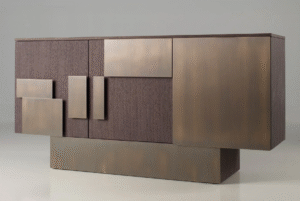
Workshop notes
-
0.6–0.9 mm face veneer on ~15 mm lightweight core.
-
Book-/butterfly-matched panels with a numbered veneer map.
-
Satin where hands live; keep mirror gloss for one protected “ceremony” plane.
-
Real-timber edge banding; controlled humidity during cure.
Where to find it now
Bespoke veneer casegoods & marquetry — on 1stDibs · Artisan cabinetmakers who match your flitches — via Artemest.
4) Bouclé volume, cashmere mercy
When people sit, the room should hush. Bouclé gives sculptural shoulders to a settee; cashmere softens stone and timber without visual noise. Zip-off covers mean a spill is a pause, not a crisis.
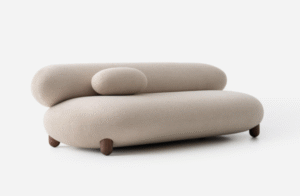
Bench specs
-
Stain-guarded bouclé/cashmere; removable slipcovers.
-
Dense foam cores ~40–45 kg/m³ so cushions don’t collapse by August.
-
Piping that picks up your metal family (bronze or nickel) so the palette loops cleanly.
-
Seat heights 440–460 mm; backs with a gentle rake you can live in.
Where to source
Designer bouclé & cashmere textiles — on 1stDibs · Tailored upholstery studios — via Artemest.
5) Leather where hands actually go
Rails, posts, bed surrounds—the places you touch without looking—deserve leather. Stainless is honest; leather is civilized. A rail that gives slightly under the palm turns movement into choreography instead of bracing.

Bench specs
-
Aniline-dyed hides with a UV topcoat.
-
Rail Ø 38–42 mm feels right in the hand.
-
6–7 SPI saddle stitch in waxed thread; subtle contrast or tone-on-tone.
-
Edge-dye + hidden start/finish so sweat and salt don’t lift the wrap.
-
Bronze end caps; sections wrapped to be replaceable.
Where to source
Couture leather wrapping and stitched pulls from specialist workshops via Artemest; vintage grips/handles to re-cover on 1stDibs.
6) One high-gloss moment, used like jewelry
On board, gloss is punctuation, not wallpaper. Give each space a single glossy plane—a tray top, console lid, or nightstand face—and let everything around it stay satin so light has one star to land on.
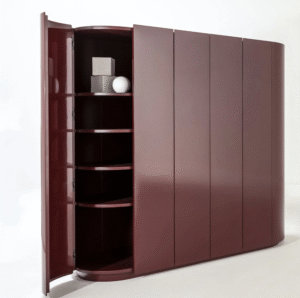
Bench specs
-
Polyester build ~1.2–1.5 mm with a sacrificial clear for future polish.
-
110° soft-close hinges; felt bumpers where planes meet.
-
Mask edges during install; unwrap late to avoid micro-swirls.
Where we’d source today
Commissioned high-gloss casegoods via Artemest; collectible gloss accents and trays on 1stDibs.
7) Honeycomb-backed stone — real truth, yacht weight
You want marble and onyx for how they feel under hand, not for the kilos. The fix is a 3–5 mm face bonded to aluminum honeycomb: all the depth, none of the drama. Ease edges to 2 mm; seal with AR products; specify anti-slip if it ever sits underfoot. Most important—design lift-off access behind vanities and credenzas before anyone reaches for adhesive.
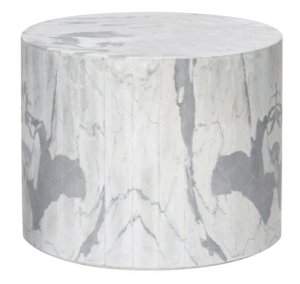
Bench specs
-
Template → dry-fit → bond (in that order).
-
Hidden clips or gasketed panels for service.
-
Match veining across joins; avoid “picture-frame” edge strips.
Where to find it now
Lightweight marble & onyx systems on 1stDibs; made-to-order stonework and finishing shops via Artemest.
8) Rugs for a Luxury Yacht Interior: Mohair & Silk
Luxury isn’t deep pile; it’s quiet. Low-pile mohair or mohair-silk (6–8 mm) with leather binding (10–12 mm) and a proper underlay turns footfall into presence instead of noise. Template the perimeter so corners never curl when the cabin warms. Book a quarterly clean; treat it like a favorite jacket and it will age like one.
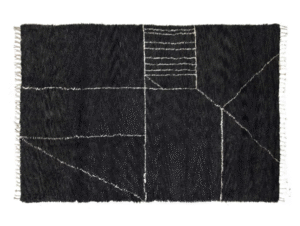
Bench specs
-
Marine-rubber or dense felt underlay; taped to anti-skid pads.
-
Binding tone that echoes your bronze or leather wraps.
-
Runners cut with hatch lines in mind.
Where to source
Custom hand-loomed mohair/silk rugs via Artemest; collector-grade vintage silks on 1stDibs.
9) Raffia, grasscloth & silk wall fields — built as lift-off panels
Texture changes how light sits on a room. Use natural wall fields where eyes linger—headboards, narrow passages, a saloon niche—but build panels, not paper. The space gets depth and the echo drops without piling on color.
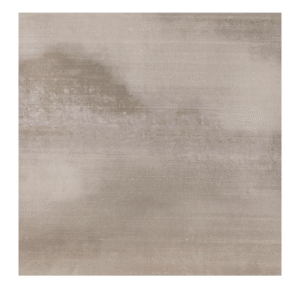
Install notes
-
Textile laminated to a breathable backer; panel on marine ply or phenolic honeycomb.
-
Sealed edges; tiny expansion gap; hidden turn-buttons or Button-Fix so panels lift for service.
-
Sample under the boat’s warm light—showroom LEDs lie.
Where we’d source today
Artisan raffia/grasscloth/silk via Artemest; rare vintage silks and papers (use as panel faces) on 1stDibs.
10) Art & objects with provenance—mounted for sea
Rooms need a point of view. Pick a few things you’ll still want to look at after a season: a photograph under anti-reflective acrylic, a resin-coated print on aluminium, a small sculpture that’s pinned so a jump wake can’t move it. Three good pieces placed like punctuation beat thirty.
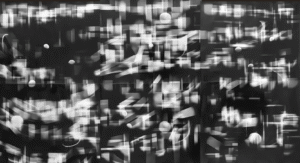
Mounting notes
-
AR acrylic glazing; aluminium-dibond or resin-coated substrates.
-
Discreet security hardware; museum gel or hidden pins for objects.
-
Log provenance and sizes; pre-drill into backing, not bulkhead skins.
Where to source
Contemporary editions and design objects on 1stDibs; framing & mounts through specialist makers via Artemest.
How the boat reads as one language
A luxury yacht interior looks expensive when it’s calm. Calm comes from repeats: the same metal family wherever fingers land; the same warm light everywhere; the same timber tone with grain running one way. Stitch and piping nod to the metal; gloss appears once per room and then stops. Approve samples under the boat’s own light, not a showroom rig. Number the veneer map. Back-paint or gasket metal where it touches lacquer. Tag the few glossy planes for maintenance; everything else should be touchable without fuss.
Five checks before sign-off
-
One metal carried through pulls, latches, lamp collars.
-
One timber story; grain direction agrees across doors and casework.
-
One light temperature (≈2700 K, CRI 95+) with 24-V PWM dimming.
-
Stitch/piping tone ties back to the metal.
-
Exactly one glossy moment per room; the rest in satin.
Light by the day (crew-proof presets)
Design for the moments you actually live aboard; save them as presets so anyone can recall them.
Day — Ambient around 55%. Satin finishes keep reflections down; veneer and stone do the talking.
Golden hour — Alabaster carries; task lights 25–30%. Metal warms; glassware glows.
Night — A soft trail: sconces 10–15%, floor wash minimal, cabins at a whisper. PWM ~1–2 kHz keeps cameras clean and eyes relaxed. The result is conversation, not a showroom.
Owner’s-rep quick answers
Textile wall fields—do they last at sea?
Yes, if they’re panel-mounted with sealed edges and a breathable backer. Panels lift for service; seams stay tight through seasons.
Bronze beside lacquer—will it stain?
Back-paint or gasket contact points and use nylon-washered countersunk screws. Keep a light beeswax schedule; adjacent lacquer stays clean.
Dimming that won’t flicker on camera?
24-V drivers with PWM around 1–2 kHz, warm 2700 K (CRI 95+) across the family. Save presets for Day / Golden Hour / Night.
Polyester gloss—can we correct onboard?
Yes. Sacrificial clear, foam pad + fine compound + microfiber. Micro-swirls and edge halos polish out in a lay day.
How many “statements” per room?
One glossy moment, one art focal point. Everything else stays quiet; that’s the expensive look.
A last quiet note
Just before first light the harbour turns slate and the boat edits herself. A rail gives a little under leather. Grain runs like a slow tide. An alabaster shade carries the dark so nothing else has to. That’s what we’re building toward: rooms that don’t perform for attention—they behave. Make a few good decisions, keep them consistent, and the result is a luxury yacht interior that feels inevitable, mile after mile. When guests turn in and the anchorage goes still, the room stands down and you exhale.
Continue the journey
• Browse Gear & Style — maker-picked lighting, hardware, stone, textiles.
• Explore Destinations — Riviera loops and quiet anchorages worth the fuel.
• Read the Journal — short build notes behind these choices.
